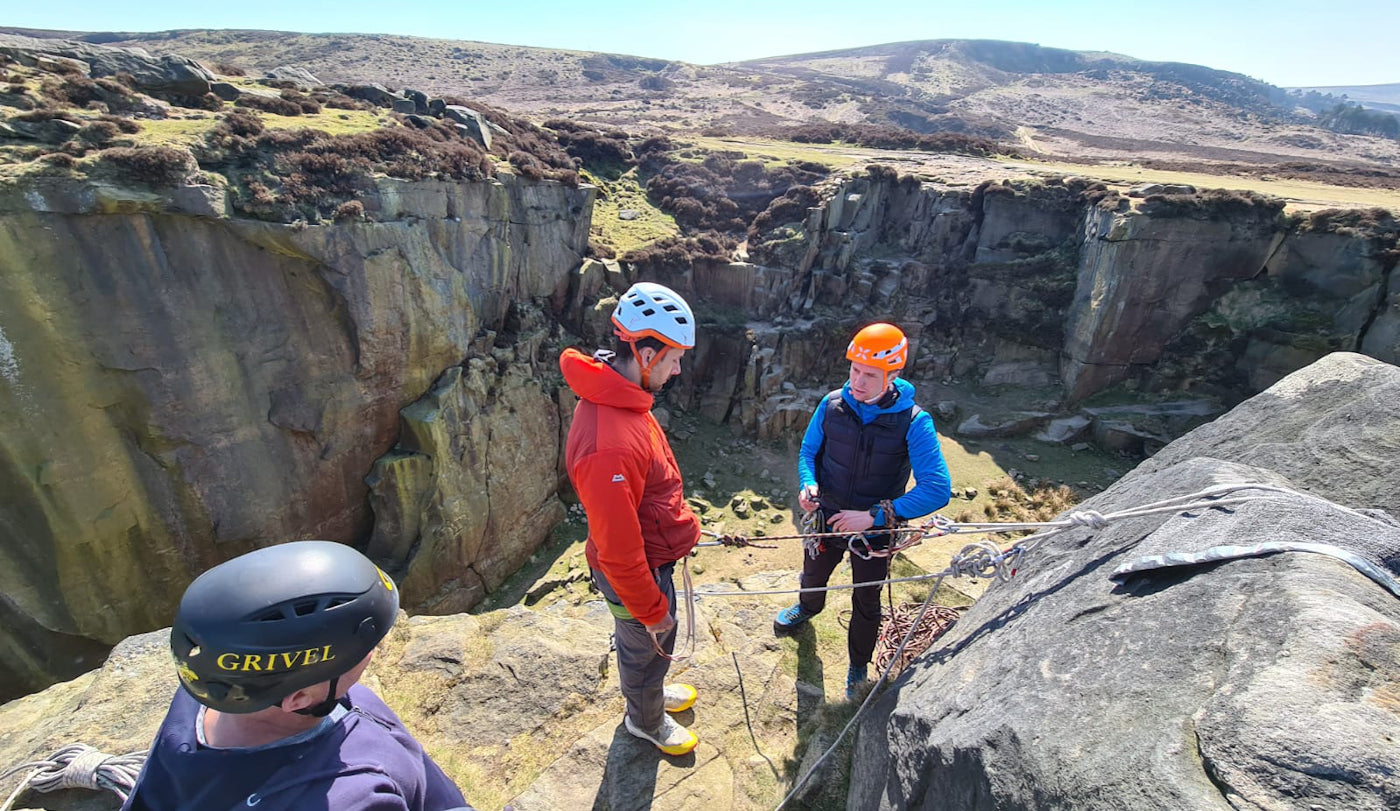by James Garner
If you’re completely new to climbing, or even if you have only ever sport climbed or bouldered before, your first ‘trad’ climbing experience can be daunting. Placing protection, building an anchor and taking lead falls take time to remember and get right each time. Here we take a look at what it takes to become a safe and competent trad climber.
What is ‘trad’ climbing?
Trad climbing or ‘traditional’ climbing, is the original style of rock climbing in which the lead climber places all the gear (or protection) required to protect against falls. The second will then follow and remove the gear as they climb.
Trad used to simply be known as ‘climbing’, until sport climbing (bolted routes) and bouldering took off, so it has naturally been given its own name to distinguish that type of climbing.
Is trad climbing dangerous?
It certainly can be. When things do go wrong, it is usually down to lack of experience, incompetent belaying, protection failing or all three. Practice goes a long way to ensure you limit what can go wrong when outside at the crag. However, it is worth noting that even the most experienced of climbers can still get things wrong.
How do you get into trad climbing?
Nowadays, most climbers start off in the gym and migrate outside. Finding someone that has a lot of trad climbing experience can be a great way to learn the ropes (sorry) and can ensure a safe transition from indoor to outdoor. Although, that’s not to say that you can’t go straight to trad climbing if you’ve never climbed before!
If you don’t know or trust someone that can teach you, get in touch with a reputable outdoor company that teaches trad climbing. They will teach you the basics of what passive and active protection is, how to place it, when to use an extended or alpine quickdraw, how to build an anchor, basic and essential knots needed, when to use single and half ropes and more. It is likely you will already know how to belay and climb from time spent inside, if not, you will be taught those skills as well.
What is protection?
Protection is gear you carry on your harness that you place into the rock to protect you from any falls.
The two types of protection are passive and active: passive pro is the simplest type. You place it into a crack so that if a load (fall) is applied, it goes deeper into the crack and stops you from falling. Examples of passive protection are nuts, hexcentrics and offsets. Active pro is a moving device, also known as camming devices (or cams). These can be used in parallel sided cracks where you wouldn’t be able to place a passive bit of pro.
Although both types have their own place on your harness, it is advisable to just use passive protection and get really good at placing it before moving on to placing cams as well. You will also need some quickdraws/slings and carabiners to attach the protection to the rope.
Top tips
Practice placing your gear whilst stood on the ground; this way you can get the practice in without the chance of falling. Finding a good crack with plenty of options for this will help your confidence when on a route.
Start off on the easy grades: you may climb hard inside or on sport routes outside, but learning the basic trad climbing skills on ‘Moderates’ or ‘Difficults’ will ensure when you do get onto the harder grades, you’ll be confident that the protection you have placed will hold you during a fall.
It is strongly advisable to start at single pitch crags. You can usually walk to the top beforehand to check if you can build a solid anchor and your second can simply be lowered down if they can’t make it to the top. You can also top or bottom rope the route first and practice placing your gear knowing that if you did fall the rope would be above you.
What kit do I need?
At the start, you don’t need as much as you may think. If you’re ready to go out with a friend and need all your own things then here’s a simple list:
- Helmet
- Harness
- Belay device and carabiner
- Screwgate carabiners
- Snapgate carabiners
- Rope
- Nuts
- Slings
- Quickdraws
- Climbing shoes
UK trad grades can be a bit confusing if you have never heard of their names before, see below for a conversion of the grades you may have been accustomed to seeing in other climbing disciplines:
















